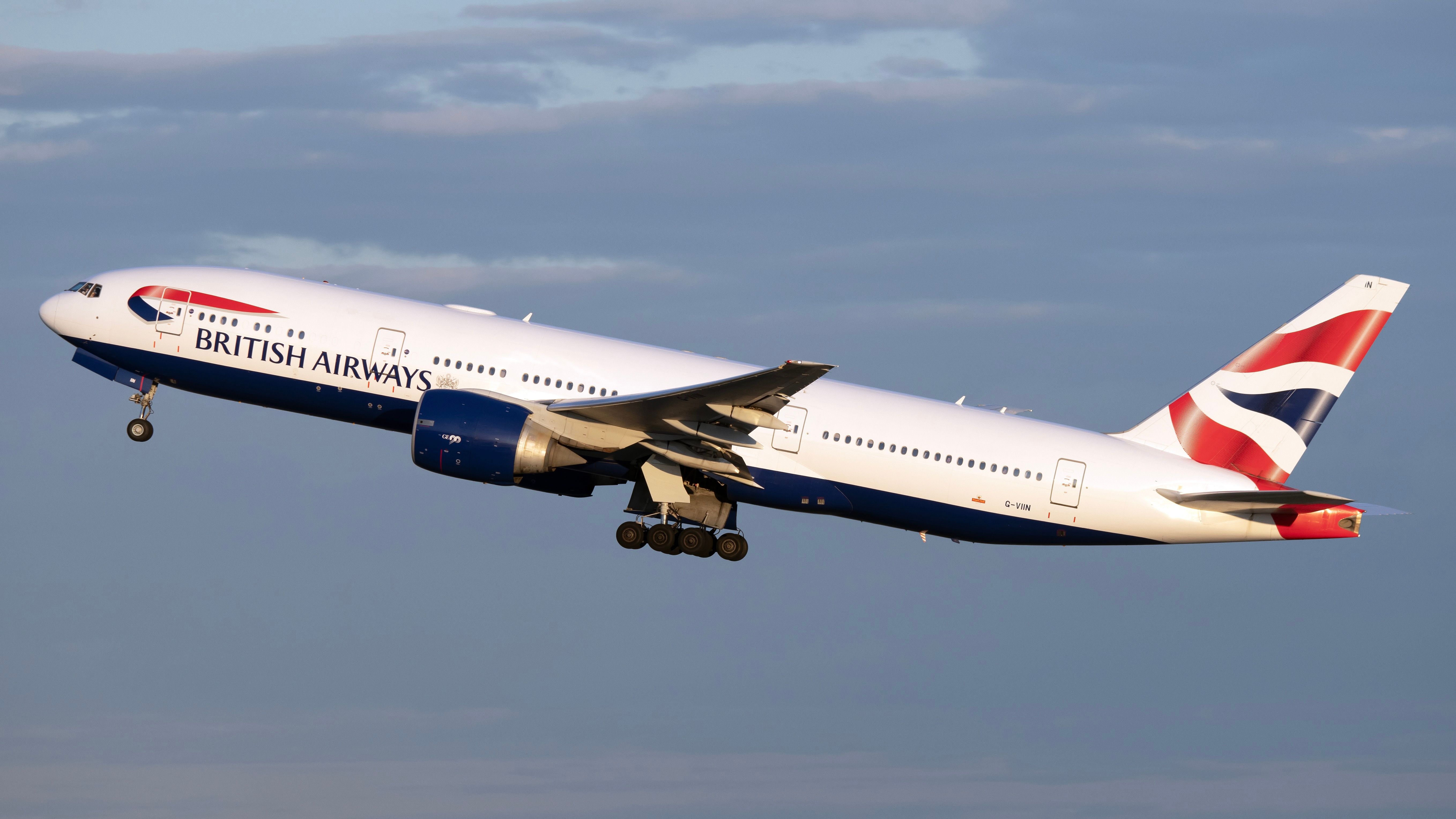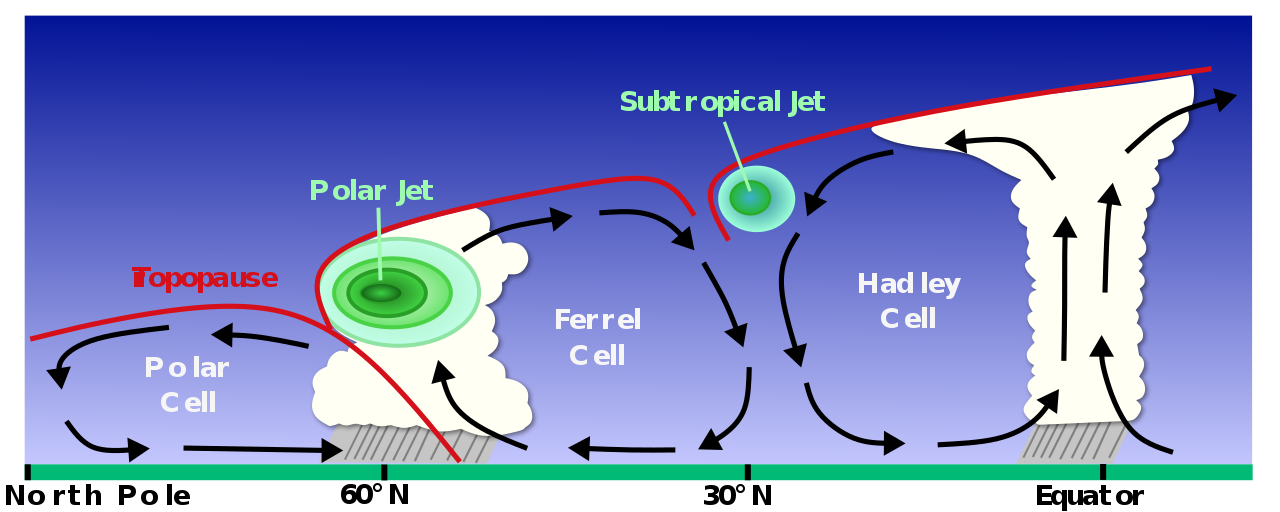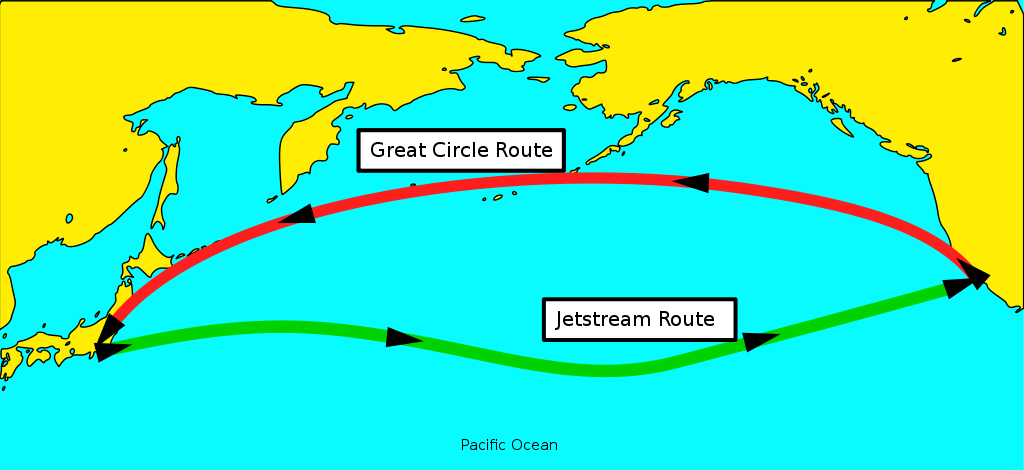Summary
- Westbound flights are typically scheduled to take longer due to the influence of jet streams, which flow from west to east.
- The rotation of the Earth and the Coriolis force contribute to the formation of these jet streams, affecting wind patterns and flight routes.
- Airlines adjust flight routings based on jet stream patterns, often choosing longer routes to take advantage of tailwinds or avoid severe conditions.
Have you ever wondered why a flight takes longer heading westbound than the same route on the eastbound leg? It’s all to do with the rotation of the Earth. Yet, it's not as simple as it might sound. This article takes a quick look at why this happens.
Longer flight times
There are many factors influencing flight duration. However, in general, you will notice westbound flights are scheduled to take longer. Compare most flight schedules, and you will see the return leg of an eastbound flight is longer than the outbound.
For instance, an eastbound flight from New York to London with British Airways is scheduled to take seven hours, and the return from London to New York takes nearer to eight hours. Nonetheless, times often vary depending on conditions.
Likewise, a flight from London to Hong Kong is scheduled to take approximately 12 hours, while the return westbound is over an hour longer.
We'd love to see you on Instagram - follow us here!
The effect of the rotation of the planet – but it's not that obvious!
Earth rotates from west to east. And at quite some speed – at the equator, rotational velocity is around 1,000 mph (1,609 km/h). Thinking simply, that should make a westbound flight take less time, as the planet is moving towards the aircraft.
This, though, does not happen. In reality, the aircraft is also moving away from the destination as it continues to spin with the Earth (it's not just the surface that rotates, but the atmosphere, too). What matters then is the velocity of the aircraft in relation to Earth.
If you need proof of this, remember that if you jump up, Earth does not rotate under you. If it did, you would land hundreds of meters away!
Adding in the effects of wind – the jet streams
It is the rotation of the Earth that causes longer flight times, but not because it's moving towards or away from the flying aircraft. It is instead due to its influence on wind patterns – the so-called high-altitude jet streams.
A rotating object has a force perpendicular to the axis of rotation – this is known as the Coriolis force. This force pushes winds to the east in the Northern Hemisphere and the west in the Southern Hemisphere. The strength of this is related to the speed of rotation. Points closer to the equator rotate faster than those closer to the poles – as they have further to travel in each rotation at the same time.
In addition to this, winds are affected by solar heating and will flow from areas of high pressure to low pressure. Combined, these effects produce jet streams that move from west to east but with an undulating pattern. The jet stream can vary in strength, altitude, and routing over time and will usually be strongest closer to the poles.
All in all, the jet streams form at the transitions between circulation cells, driven by the Coriolis force.
These jet streams have a significant effect on aircraft. An aircraft traveling east can effectively pick up a tailwind, speeding its journey. In contrast, a westbound flight may end up flying against the wind.
Get the latest aviation news straight to your inbox: Sign up for our newsletters today.
Routing flights
More than just affecting average flight times, these jet streams have a major impact on flight routings and scheduling. Airlines will look at jet stream patterns each day and alter routes for their flights accordingly. Taking a longer physical distance route might make sense if you can piggyback on a strong tailwind. Likewise, you can re-route westbound flights to avoid some of the effects of the jet streams.
In summary, a carrier may choose a longer route if it means avoiding severe conditions. Airlines also have to take air traffic restrictions to take into account when planning.
The below image presents a simple example of how routing using jet streams may differ from direct routing.
Cornell University summarizes the underlying factors with the following:
"When any solid body rotates, bits of it that are nearer its axis move slower than those which are further away. As you move north (or south) from the equator, you are moving closer to the axis of the Earth and so the air which started at the equator and moved north (or south) will be moving faster than the ground it is over (it has the rotation speed of the ground at the equator, not the ground which is is now over). This results in winds which always move from the west to the east in the mid latitudes."
Jet streams have caused some unorthodox paths over the years. The below X post shows one such example.
Looking back
The aforementioned factors are part of the reason why we hear of record-breaking aviation feats over the years. For instance, when Concorde flew from New York to London in just two hours, 52 minutes, and 59 seconds, 175 mph (281 km/h) tailwinds helped the supersonic airliner across the Atlantic Ocean.

Throwback: When Concorde Completed The Fastest Transatlantic Crossing
The delta-winged jet flew from New York to London in under three hours!Additionally, when a British Airways Boeing 747 flew from New York to London in just four hours and 56, a record for a subsonic commercial aircraft on the route, the winds of Storm Ciara assisted the jumbo on its way.
So, next time you are told your flight will be longer or shorter due to wind or jet stream effects, you will know why.
What are your thoughts about these aspects affecting flights? What do you make of their overall impact on the aviation industry? Let us know what you think of the factors involved in the comment section.




